
Chemical Tankers / Day 1 / Day 1 Topic 3 Chemical Family
.pdf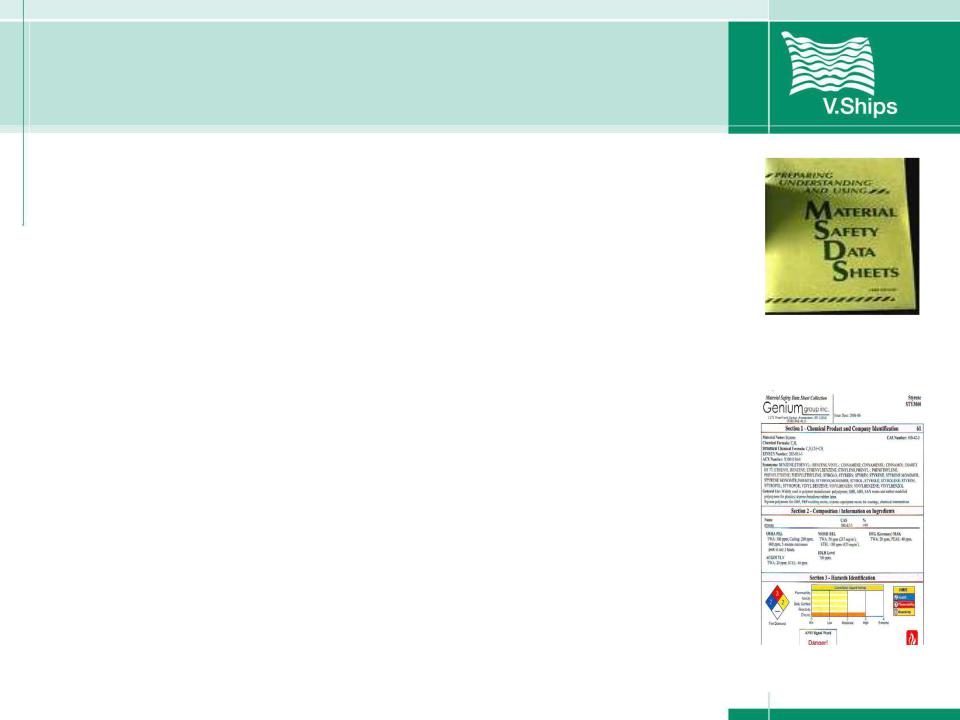
MSDS contents
Product Name: Commercial or marketing name.
Synonym: Approved chemical name and/or synonyms.
Chemical Family: Group of chemicals with related physical and chemical properties.
Formula: Chemical formula, if applicable; i.e., the conventional scientific definition for a material.
CAS Number: Number assigned to chemicals or materials by the Chemical Abstracts Service, where applicable.
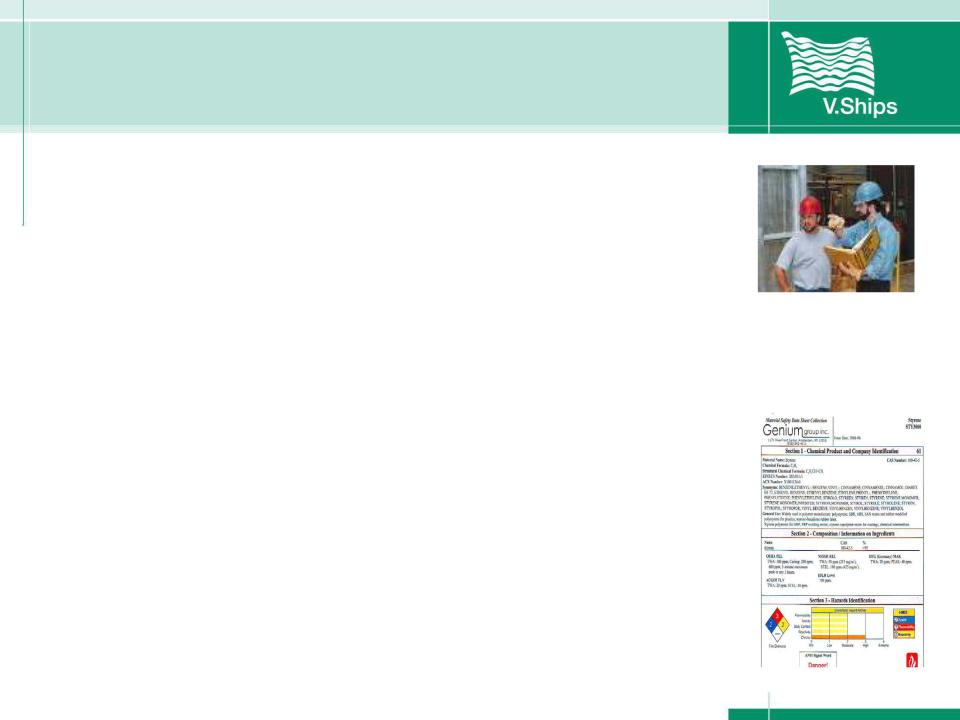
MSDS contents
Hazardous Ingredients Of Mixtures
This section describes the percent composition of the
substance, listing chemicals present in the mixture. If it was tested as a mixture, lists chemicals which contribute to its hazardous nature. Otherwise, lists ingredients making up more than 1% and all carcinogens.
The OSHA permissible exposure limit (PEL), National Institute for Occupational Safety and Health (NIOSH) recommended exposure limit (REL), and/or the American Conference of Governmental Industrial Hygienists (ACGIH) threshold limit value (TLV) will also be listed, if appropriate. (continue next slide)
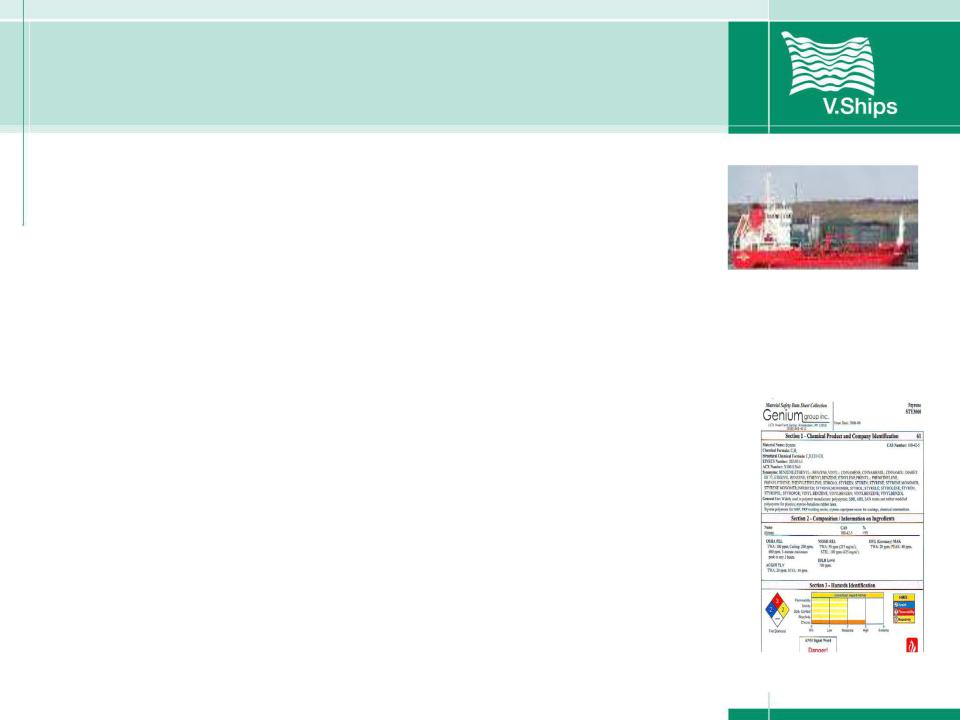
MSDS contents
Hazardous Ingredients Of Mixtures
Continued..
The OSHA PEL is the enforceable standard, while the others
are recommended limits. The PEL is usually expressed in parts per million parts of air (ppm) or milligrams of dust or vapor per cubic meter of air (mg/m3). It is usually a time
weighted average (TWA) - concentration averaged
over an eight hour day. Sometimes, a STEL or short term
exposure limit may be listed. The STEL is a 15 minute TWA which should not be exceeded. A ceiling limit ©, is a concentration which may not be exceeded at any time.

MSDS contents
Physical Data
This section outlines the physical properties of the material. The
information may be used to determine conditions for exposure. The following information is usually included:
Boiling Point: temperature at which liquid changes to vapor state
Melting Point: temperature at which a solid begins to change to liquid
Vapor Pressure: a measure of how volatile a substance is and how quickly it evaporates. For comparison, the VP of water (at 20o C) is 17.5 mm Hg, Vaseline (non-volatile) is close to 0 mm Hg, and diethyl ether (very volatile) is 440 mm Hg.
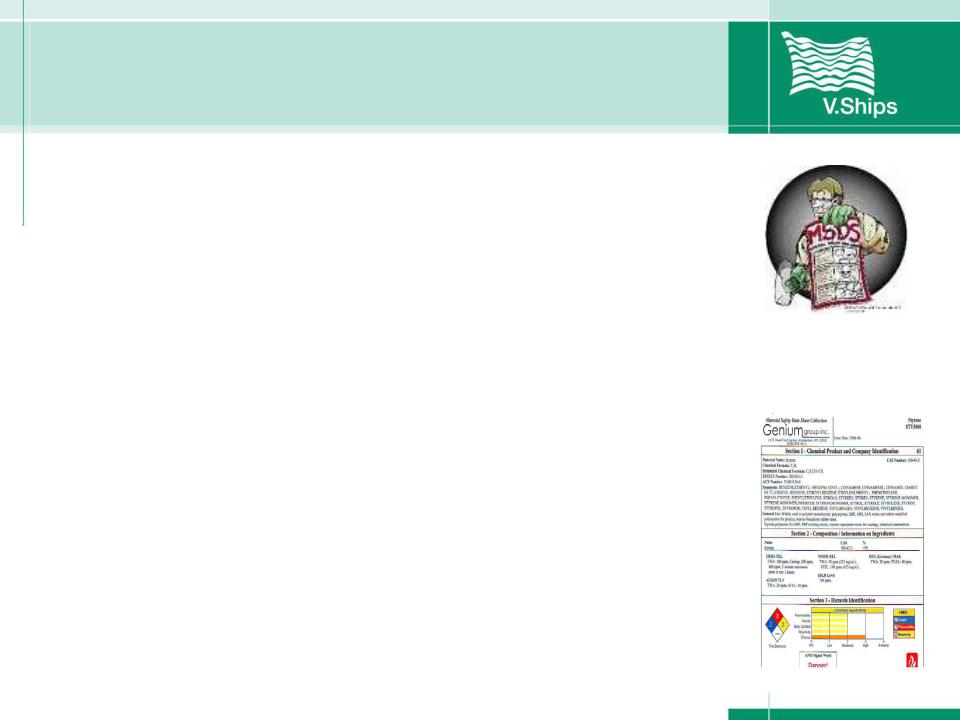
MSDS contents
Physical Data (Continued..)
Vapor Density (air=1): weight of a gas or vapor compared
to weight of an equal volume of air. Density greater than 1 indicates it is heavier than air, less than 1 indicates it is lighter than air. Vapors heavier than air can flow just above ground, where they may pose a fire or explosion hazard.
Specific Gravity (water=1): ratio of volume weight of material to equal volume weight of water.
Solubility in Water: percentage of material that will dissolve in water, usually at ambient temperature. Since the much of the human body is made of water, water soluble substances more readily absorb and distribute. (continued..)

MSDS contents
Physical Data (Continued...)
Appearance/Odor: color, physical state at room
temperature, size of particles, consistency, odor, as compared to common substances. Odor threshold refers to the concentration required in the air before vapors are detected or recognized.
% Volatile by Volume: Percentage of a liquid or solid, by volume, that evaporates at a temperature of 70oF.
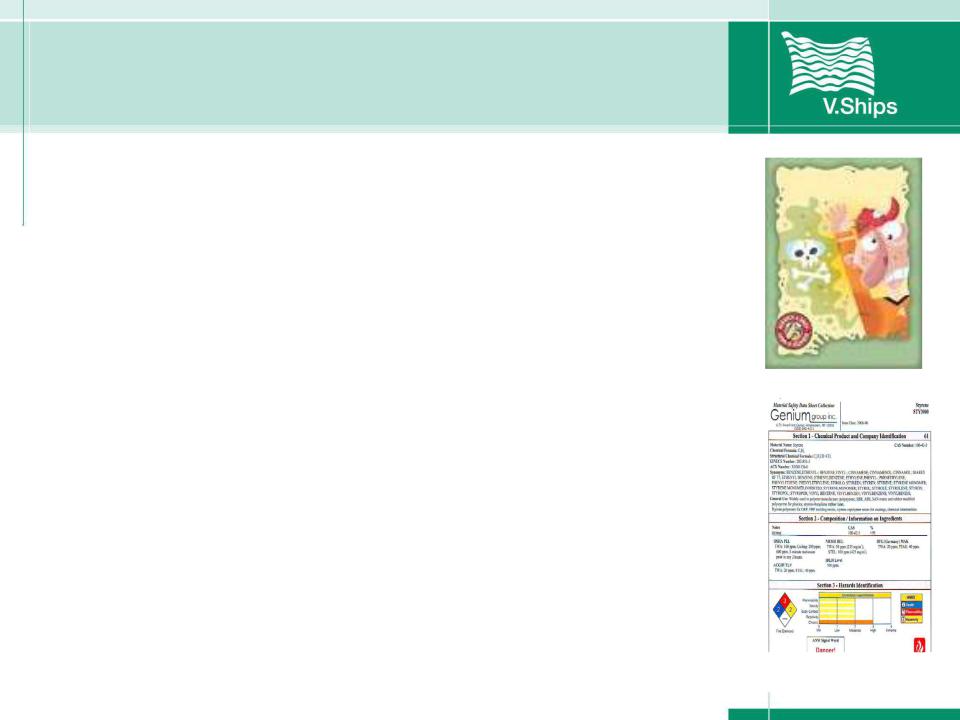
MSDS contents
Physical Data (Continued...)
Evaporation Rate: usually expressed as a time ratio with
ethyl ether = 1, unless otherwise specified.
Viscosity: internal resistance to flow exhibited by a fluid, normally measured in centiStoke time or Saybolt Universal Secs.
Other Pertinent Physical Data: information such as freezing point is given, as appropriate.
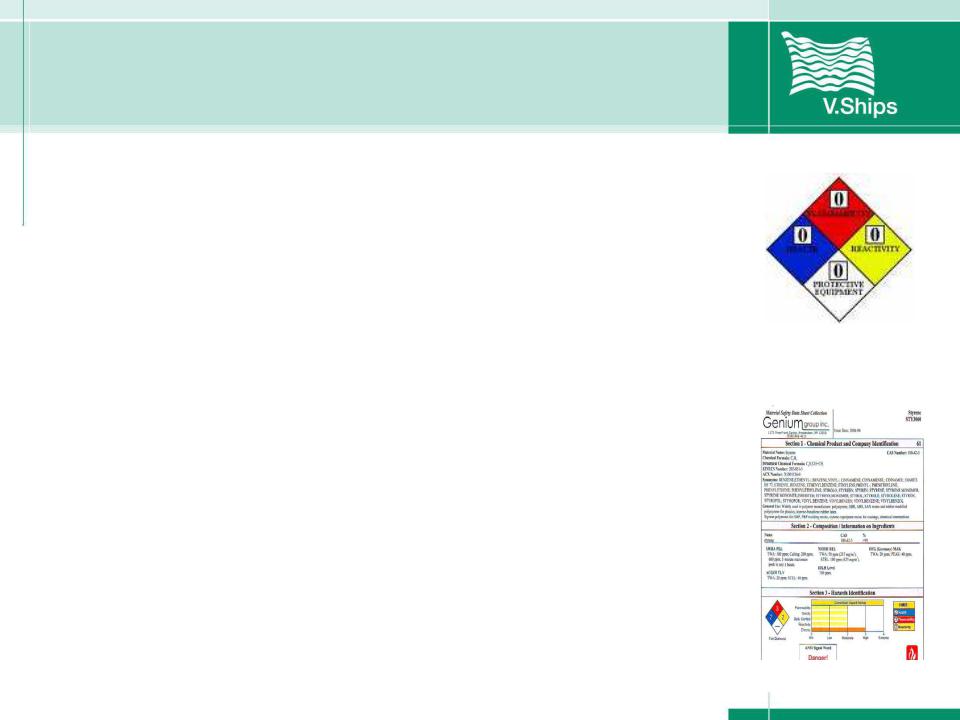
MSDS contents
Fire And Explosion Hazard Data
This section includes information regarding the flammability of
the material and information for fighting fires involving the material.
Flashpoint: the lowest temperature at which a liquid gives off enough vapor to ignite when a source of ignition is present.
Auto ignition Temperature: the approximate temperature at which a flammable gas-air mixture will ignite without spark or flame. Vapors and gases will spontaneously ignite at lower temperatures in oxygen than in air.
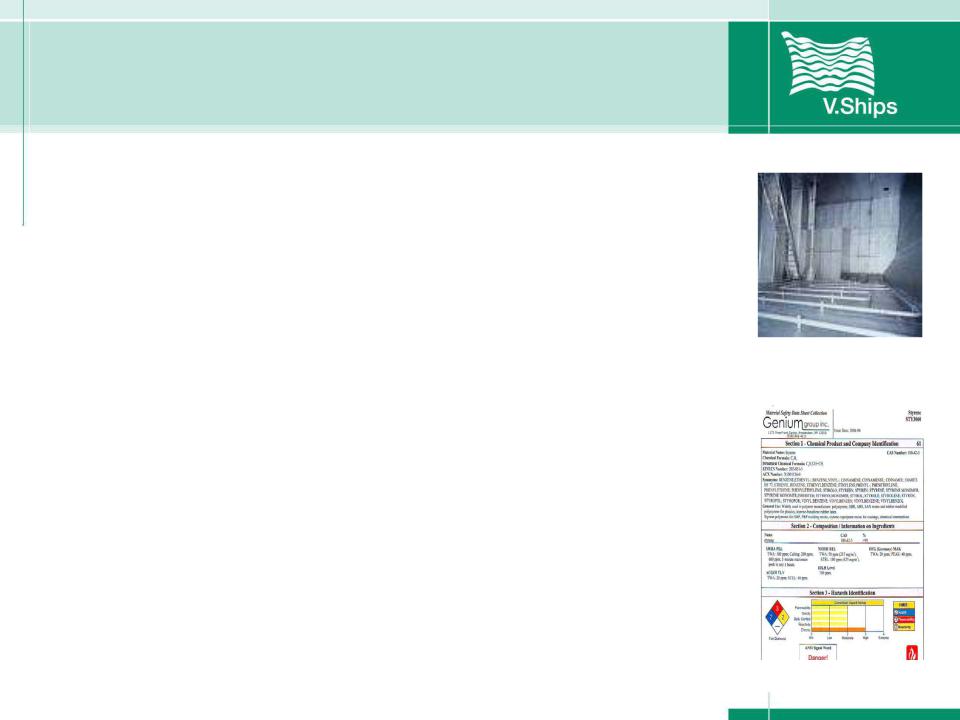
MSDS contents
Fire And Explosion Hazard Data
Continued..
Flammable Limits: the lower explosive limit (LEL) and upper explosive limit (UEL) define the range of concentration of a gas or vapor in air at which combustion can occur. For instance, an automobile carburetor controls this mixture - too lean (not enough chemical) or too rich (not enough air, as when you flood your engine), will not ignite.
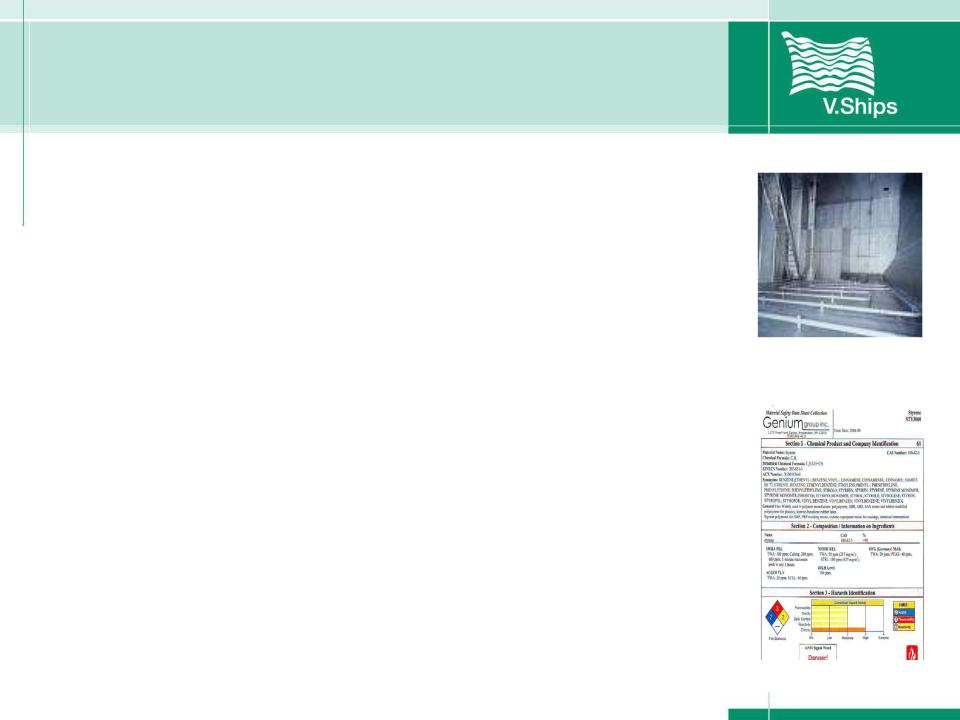
MSDS contents
Fire And Explosion Hazard Data
Continued..
Extinguishing Media: appropriate extinguishing agent(s) for the material.
Fire-fighting Procedures: Appropriate equipment and methods are indicated for limiting hazards encountered in fire situations.
Fire or Explosion Hazards: Hazards and/or conditions which may cause fire or explosions are defined.
